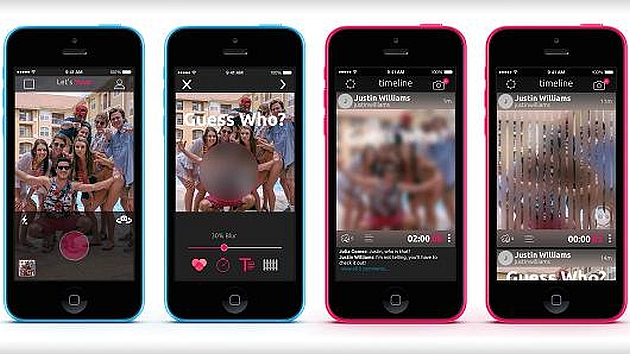Yovo Scambles Pictures To Protect Them From Screen Captures
As evidenced in the continuing saga of the celebrities with illicit photographs of themselves being accessed and shared across the internet, there is a need to add additional protection for images that one wishes to share privately between two consenting adults.
As the actress Jennifer Lawrence pointed out to Vanity Fair magazine in her first interview since the first tranche of photos were first released, the images she took were intended only for her partner to see because they had a long distance relationship. This is not an issue only for celebrities though. Protection from hacks is needed at a fundamental level. Enter the Yovo app for the iPhone which has almost perfect timing but was in fact a year in the making (no Android version yet).
Photos can be shared and protected at the same time via the ContentGuard app, Yovo. It has created what it is called “D-Fence” against anyone who wants to view a photo and then take their own separate screen capture of the photo for storing outside of the app and its cloud storage. The D-fence is a rapid flickering of blurred lines layered over a picture which effectively prevents proper snapshots from being taken.
The app also has some other tricks up its proverbial sleeve. It is possible to share a photo with another Yovo user (one Yovo app for him and one for her, perhaps) but limit the viewing time to between 1 second and a much long period of time. This is a little bit Mission Impossible with photos effectively self destructing after a certain amount of time has passed.
A photo can be blurred out using a focus circle to cover one person in a group shot. A caption can be added above the image to give more information and a suggestion how to view the full image.
Share Over Social Media
Unlike with Snapchat where friends who are not using the app will not see the content shared by the regular friends inside the Snapchat app, with the Yovo app it is possible to share the images on social sites like Facebook. The images are altered to add some protection and people are invited to download the Yovo app in order to view the unaltered image.
It will depend how much people care about keeping their images more private during the sharing process as to whether they will want to download another app to their iPhone or not. But the sharing aspect of Yovo does make it less exclusionary than Snapshot does with its more closed system approach to users and digital content.
ContentGuard from Xerox PARC
ContentGuard, the people behind this app is actually another spin-off from Xerox PARC. Focused closely on many aspects of DRM protection for digital content (usually written content and photographs) which ultimately produced 260 patent registrations, the new company saw that there could be a greater application for protecting consumer-generated content too.
The company pivoted about a year ago towards the issue of how to offer consumers a way to protect their photographic content that they wish to share on social media sites and still retain some degree of control over the content following its release. Yovo is the fruits of their labor.
The question remains though whether iPhone users already comfortable with using Snapchat and other imaging apps will be willing to switch their allegiance in order to gain greater control over their own image or whether they see the recent photo hacking as largely a problem for celebrities alone.

